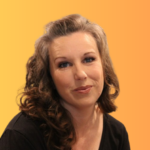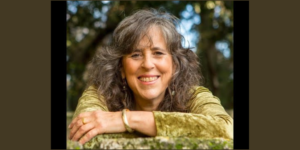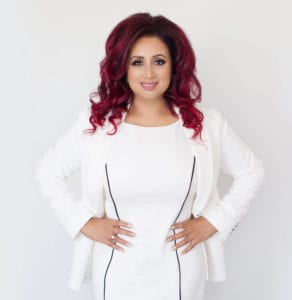Raj Girn: This week’s theme is a new series that I started called A CEO’s Journey, where I catch innovative company leaders in conversation, where I look to seek knowledge on how they think, make decisions and project their companies forward in warp speed. This week’s two-part series is entitled ‘Why the CEO is the Most Creative Member of Hyper Successful Companies.’ My guest today is a long-time friend and colleague. Ranj Bath, who is the CEO of Nurosene, an innovative app solution to build better brain health, which IPOed just recently after barely a year since inception.
Here is Part One of our conversation:
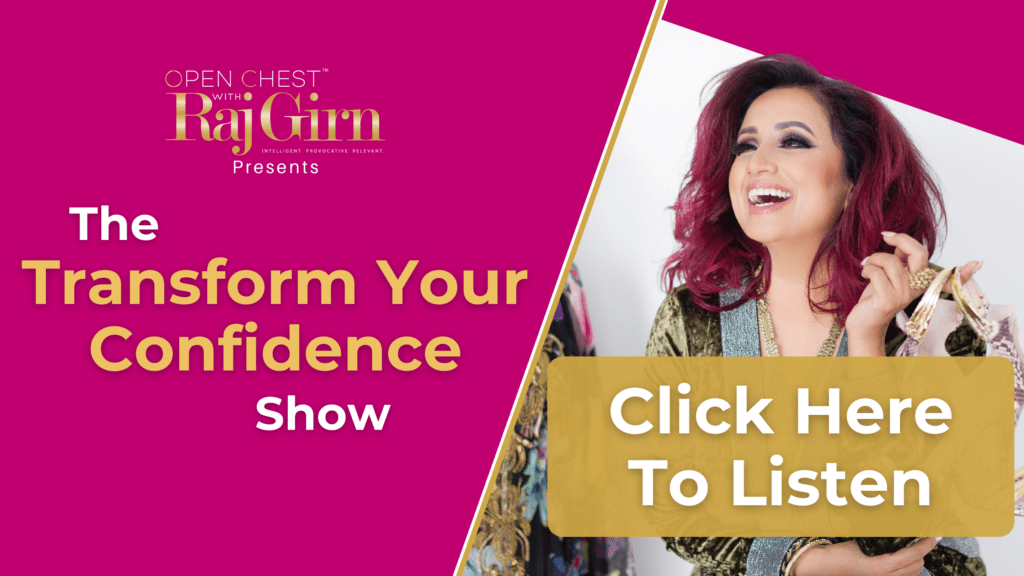
Raj Girn: Welcome to the show Ranj, I finally get you on to talk about fabulous you. How are you?
Ranj Bath: I’m amazing. Thank you for having me. It’s been a minute for sure. Really good to see you again.
You too, sweetheart. Listen, before I get into the first question, I want to kind of preface it a little bit. There are so many aspects to consider today that weren’t the case, historically speaking, like automation that is needed to scale and workforce diversification that is needed to stay competitive. These are the very core that demand a creative perspective in order to fit all of the moving parts into their respective places of the jigsaw puzzle. And if a company is to succeed in its mission to grow, these things really have to be thought about. And with so many moving parts today because of technology and how quickly innovation is happening, the most valuable creative person in a company I truly believe is the CEO. My personal definition of creativity, as it relates to business, is being able to incorporate all aspects of the business towards one single end, the company’s vision. And we do this through its mission and its values so that the company can own its market share and even expand it.
“With so many moving parts today because of technology and how quickly innovation is happening, the most valuable creative person in a company I truly believe is the CEO.” ~Raj Girn
Some of the better known creative CEOs that we all know about are people like Steve Jobs from Apple, Satya Nadella from Microsoft, Mark Zuckerberg from Facebook, Whitney Wolfe from Bumble and even Elon Musk from Tesla. We all know these names. And the reason we know them is that they’ve done very innovative things within their roles as CEO.
So, Ranj, I want to start our conversation after that massive preface by asking you first and foremost, why, in your opinion, through what you’ve seen happen over the past 10 years, specifically in business and through your own professional experiences do CEOs today need to be more creative than they were in the past in order for their company to be set up for success. What have you seen in the past decade?
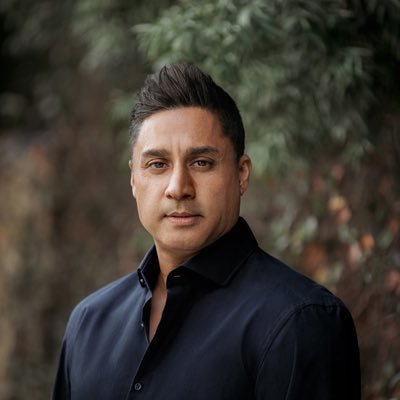
A very great question. I would say that CEOs traditionally were just going down one path. Often it was like build this large corporation, here’s one product. You go out there, take it to market, scale it. And it was pretty much that same pathway. Nowadays, if you think about the the markets that these companies are dealing with, they’re so fast moving, they’re changing and evolving. The attention span of the consumer is adapting. So you have to find creative ways to engage with the audience. And I think that’s the main thing.
Technology has changed the landscape in terms of how we’re consuming this like vast amounts of information. Like how are you going to grab that attention span? You have to do something that is creatively engaging that consumer so that they would come back and associate with your brand. And you mentioned a couple of CEOs that have been incredible. We associate with a lot of those as being highly creative. And they’ve taken their companies from some places to really scale these companies. And it’s been great to see that creativity coming through in the campaigns that they’ve been driving.
Absolutely Ranj. And are there any kind of examples that you can share from the real world that you feel really kind of exemplifies creative CEOs that have kind of grown their companies because of some of these innovations? Anything that sticks out to you? I know there’s a ton of examples, but is there one that kind of comes to you that you want to talk about? Perhaps what happened with your last company with Apple and with Beats. I mean that was very innovative. What happened there?
Yeah, So Jimmy Iovine, who was the founder of Beats with Dr. Dre, was also the founder, president and CEO of Interscope under Universal. That’s actually a great example. So there’s a whole HBO documentary on this guy and how he built this thing to what it is. Actually he became kind of like a mentor to the company, Desi Hits, which I started way back in the day. He invested into it. And then I eventually went on to help drive corporate strategy at Beats and saw them to the acquisition. And Jimmy’s a super inspiring person. If you think about what he did way back in the day. He launched Interscope Records. He built it up. He sold it off to Warner Music. I think it was like $30 million at the time. And over time then, the old the old Jewish guys at Warner Music were like, “We don’t get this gangster rap thing.”
So Jimmy bought it back for the same that he sold it for, then built it up again and then sold it for like $300 million dollars to Universal. But in the process, every single time that someone said gangster rap won’t work, he built it up. It was like he was a guy who founded Eminem when people said the white rapper wasn’t going to work. And he was like, we can can do something here. He built it up and he grew it in the same way when we built up Desi Hits. But when I first went to India and I heard Priyanka Chopra sing, when I heard her in the studio, well I took that to Jimmy. And he was like let’s do it. I’m not sure the market’s ready, but there’s a billion people that really know her, but no one knows her yet. How do we work on making her palatable for middle America?
And we had to do that creatively by doing collaborations with people like will.i.am and Pitbull. And we did the same with Slumdog Millionaire, where we we took the Pussycat Dolls and we put them together. So we put them together with A.R. Rahman. And again, you have got to think about creative ways. That’s going to be your audience.
Absolutely. And these are just some of the examples, guys, of of what I’ve seen Ranj do during his time. And let’s talk a little bit further and dive a little bit deeper on some of this stuff. Ranj having known you for over a decade now, I’ve seen your professional journey go from the finance industry to the music industry, which you just finished talking about, and now into the mental health space with a common denominator being that all of these companies, although they’re different industries, they all have technology as their core underlying base.
So for anyone out there who isn’t yet bought into the fact that all businesses have to have some technology play in order to amplify their opportunity for success. Can you explain why in the case of this that we really have to focus on implementing technology as a part of a play if we want to really scale a business today, considering where we’re kind of headed in the future? Because there’s still the old boys that don’t feel that they need to do that. And a lot of legacy brands that are still kind of really archaic in the way that they’re looking at their businesses. I want your thoughts on that.
I think it’s obvious it’s critical. So you think about my career. You mentioned the different verticals I’ve gone through. You know, the way I describe myself is I’m a marketer, I’m a brand strategist. I’ve helped various brands in different verticals. But what’s been critical in all of that process is to understand your customer, understand that market. And we have a tool here, technology, that’s going to allow us to understand the customer better than we ever had.
So understand the personas, what these people are doing, where they’re located, what are all the different things that they’re consuming in terms of content and then engaging them in a way that talks to them and resonates with them through the variety of technological platforms, i.e. the different social media platforms, the blogs that they’re reading, the devices that they’re using to engage you in that content. So there’s no better time to use technology. And it’s so critical that you take that into account to know your customer better than you ever did before.
Absolutely. And it seems like a daunting proposition considering we have so many opportunities today. But on the flip side, it gives us a lot more diversity in innovating. And also it gives opportunities to people who are maybe not so well-heeled from a financial perspective to kind of incorporate some of these tools, which are a lot less costly than building major teams of experts. Because a lot of automation is also implemented for that purpose as well, right? So I want to ask you this before we kind of move in deeper, what do you feel start-up CEOs need to know to ensure that they have in place what is needed to set their company up for growth?
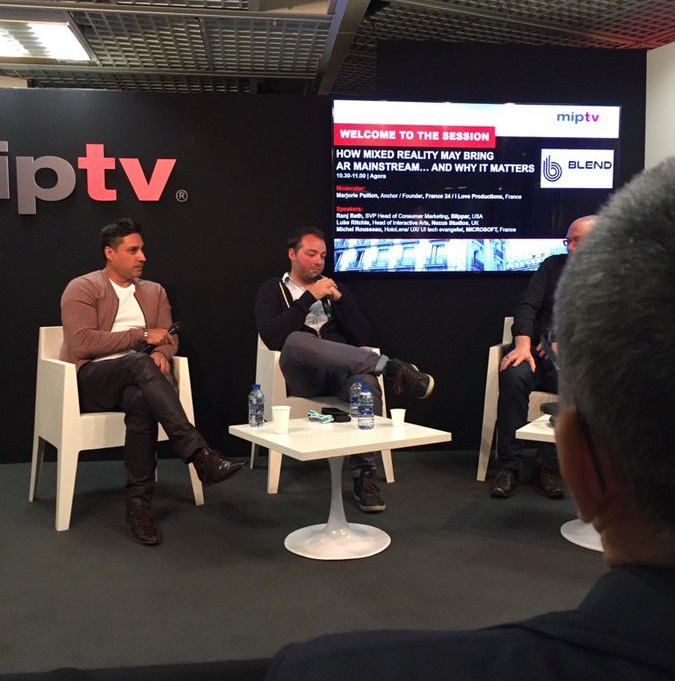
I think just coming back to having all the information to understand the customer is one. We already talked about that. Just to have the foresight and the vision of where are you going to take that company. So I’m sure we’ll talk about Nurosene about what we’re building today, but I already have that two to three year and beyond growth plan. And as CEO, I always have that in my sights. So while we’re building tactical plans around the execution right now and staffing up and building out like the marketing plans to grow in the short term, I as CEO always have to know where we’re going to and building and implementing the things in place that are going to lay the foundations for that future.
“While we’re building tactical plans around the execution right now and staffing up and building out the marketing plans to grow in the short term, I as CEO always have to know where we’re going to and building and implementing the things in place that are going to lay the foundations for that future.” ~Ranj Bath
So, to build the foundations in terms of demonstrating value and demonstrating how this thing is going to scale through . . . it could be a company that grows their user base. But I’m a big believer in demonstrating revenue early on to show that your customer values what you’re building. So to start putting those pieces in place, build a foundation, because also it helps to shape your product as well to show that where this thing can really go. And I’m not saying a company shouldn’t adapt, but to definitely have a vision and a goal to know where you’re going is definitely the foresight that you need to have.
Absolutely. And it’s that whole proof of concept, right, Ranj? I mean, without that, what are you building? Who are you convincing that what you have is a gold mine opportunity? And it’s interesting that you share what you did because a lot of successful CEOs that I have conversations with always say the same thing to me, that until they have figured out proof of concept, that this works and there’s a gap in the marketplace and that gap I’m able to fill with this, people want this. And there is an opportunity to scale this because of X, Y, Z. They don’t move forward. So it’s really interesting how you’re basically saying the same thing that you need to know as soon as possible if this is something that can be monetized before you move forward. And I love that.
I think that’s something that a lot of people who are thinking about going into business on any level need to really sit with that idea, because we tend to, as creative people, when we have this idea, we start to kind of create our products and create product and product and product. We don’t really test the market. We don’t look at the relationship between marketing and data and what does that actually mean. So thank you so much for sharing that, because I really do feel that that is really probably the most important thing that you need to do before you even think about where the company is headed.
So let’s talk a little bit about that as it relates to you in your current role as the CEO of a very interesting company, Nurosene, which states as its mission statement, I quote: “Neurontin is committed to finding solutions that will advance science, improve patient outcomes and empower people suffering from poor mental health around the globe.” That is a huge tall order. Break it down for me, sweetheart. Break it down.
It’s a big statement. So can I give you a little bit of my story of how I ended up here? So you were framing a bit of my career. I worked in large corporates and in various roles. This is my first CEO role by the way. And beginning of last year, this is actually before pandemic, I was like, you know, I actually want to take a break. And actually I’ve taken vacations all over the world, but always small trips. And I see a lot of my friends take sabbaticals and I want to take a sabbatical. So I actually had a five month trip planned to go around South America.
I was going to do like Mexico, some like Burning Man type music festival. And then from there, I was going to go to Geikie in Ecuador, Machu Picchu, Lima, Santiago, Buenos Aires. Everything was booked. I actually lost a lot of money, but that’s another story, because of the pandemic. But in March, then a pandemic hit and I couldn’t get to Ecuador because that’s one of the first places to close the border. So then I thought, well, I’m going to float around Mexico for a little bit. And then thought the pandemic is getting worse, I should just go back home before the borders close and who knows what’s gonna happen. So I came back and what I said was — I don’t know if it’s the secret where you’re putting this out there — that I want to spend my time, invest my time and my next move into something that I feel really good about and that’s impactful. This is a true story.
And I thought, you know what, I’m gonna take you off anyway and just chill and take my time. And I probably mentioned that same thing to a number of different people. And then what happened was last year I went to Tulum four times just hanging around, just taking time out from myself. When I was on a beach in Tulum, I had a call from someone who’s one of the investors in this company, and they said, we’re doing a CEO search for this company. So I’m not the founder. And they said, we’re looking for someone with your pedigree. And would you interview with the founder and other investors? And the more I looked into it, I’m like, these guys are building something incredible. And I was already having that vision, the creative juices were flying. This is what I was looking for. So I ended up just coming back and I joined as CEO last year and it’s just been a rollercoaster ride since.
Wow. Oh, my God, I love everything about that story. So, I mean, everything is on purpose, sweetheart, whether we planned it or not, like somehow we end up where we need to end up. Right?
Well, there’s a saying that I have been coining recently by the Persian philosopher Rumi: “What you seek is seeking you.” And I actually really believe in that. And I wake up every day. And I just told you earlier, just before the interview, I’ve been sitting at this desk since 5:00 in the morning. And I do this so passionately because I’m doing something that I love and I feel like I’m doing something while we’re building this amazing company. And we’ve already taken the company public to the market. But I feel really passionate about what I’m doing. And I think coming out of the pandemic, that’s so important for everyone as well. Like, if you didn’t come up with some kind of change or re-evaluating what you’re doing, then what was this year for you?
Absolutely. I completely and utterly agree because I’m a firm believer that polar opposites there’s always a purpose for it. When there’s something extremely dire and negative, there is something extremely positive and uplifting on the other side. You just got to kind of hone into that energy. And that’s kind of what you did here, Ranj. And I want to dive in now with Nurosene. Tell everyone, what is this company like? What does it offer?
There’s many pieces to it. So I’ll be careful not to kind of unfold too much but, like I said, I have this grand vision for the company. So my founder, his name is Daniel Gallucci. Very incredible individual. If you ever meet this guy, then you’ll be like we have to build the company around this guy. He’s a 20-year veteran functional neurologist out of Toronto. But actually during the pandemic he has been living in Nova Scotia and Halifax, which is why I’m here early, because it’s four hours ahead. And I learned the hard way that you guys in Canada have another time zone. So sometimes my day starts really early and the rest of my team is two hours ahead, three hours ahead. But basically, he’s worked with celebrities, athletes, NHL players, NFL teams. And you know what? What we’ve actually done is we’ve digitized the experience of you going and seeing a functional neurologist.
And what we want to do is almost like democratize health care so that this isn’t just for the select few that have the means in private clinics. So this is one thing you’ll always see is the app that we’ve just launched into market just now, which is taking these brain health brain coaching exercises, is always going to be free. And you’ll see why we’ve got certain people involved in the company as well. And basically, on the basic level, it’s exercises that train your brain. And we’re trying to educate and we feel like we have a social responsibility to educate. We all know that the the brain controls many different things. But to stretch this thing on a daily basis into what we call radically fundamental things that we should be doing on a daily basis is so important. And everyone understands the importance of like stretching exercise and people coming out of pandemic even more.
So I think that physical fitness and nutrition, we’re trying to educate on mental wellness. So there’s exercises and activities that we put inside the app. We’ve also launched a line of nutraceutical supplements which have been designed by my founder, who started the Institute of Functional Medicine. So these are being designed right down to cellular level, how they’re affecting your brain. This stuff is incredible. But where this thing’s going where the most excitement about the market is as you’re doing these activities we’re building in in technologies like all these wearable devices that track your heart rate variability, resting heart sleep tracking cycles. We’re building facial capture technology inside the app.
“We all know that the the brain controls many different things. But to stretch this thing on a daily basis into what we call radically fundamental things that we should be doing on a daily basis is so important.” ~Ranj Bath
So while you’re doing these activities, like looking at like some dot moving around on the screen, we’re detecting your eye movements which can detect things like anxiety. The facial capture can also detect like 120 different areas of inflammation of your face using the gyroscope on the phone for balance. So all the things that the neurologist at the clinic would recognize those things. And also from filling out surveys and things like, oh, I can detect that you’re predisposed to certain conditions. You should change your program in a preventative solution. What we’ve done is we’ve digitized that and we can start predicting with the eye whether you might be predisposed to anxiety, depression and things like that leading into more serious health care conditions as well, which we’re working with the FDA on to see if we can get these things cleared for digital therapy. So that’s kind of what we’re building.
Wow. Oh, my gosh. That just is so much. I mean, I can’t even imagine the technology that’s involved with all this.
There’s more technology is incredible. What we’re also doing and this is what blows your mind. The AI will detect certain conditions and put you on a pathway to alleviate them. So over time, your personalized program through the app will be very different from mine based on what factors you might be facing. But what we’re also doing is we are collecting data sets around subpopulations that could be suffering certain diseases or that have gone through COVID. We can start detecting differences in the subpopulations that allow us to start identifying development opportunities for Pharma drugs, which is where we’re going with this.
And I’m already on a pathway of a few of these that we’re going to start talking about soon as well. So there’s all sorts of opportunities. So when I was talking about earlier about that bigger vision of where this thing goes. We’re going to start owning IP around specific pharma drugs and actually take companies or take these drug molecules through phase one clinical trials and then turn them over to like Pfizer, pumping $20, $30 million dollars per drug, which we don’t have. But I’m owning IP, so there’s a big opportunity there.
Yeah, absolutely. And my gosh. So I need to ask you this question, Ranj. Who is this for? Like, who is the ideal customer for something like this?
It’s for everyone. And that’s why I’m saying. You don’t have to be suffering with a mental health condition. It’s like we’re just trying to educate on the importance of taking care of your brain anyway. So, yes, if you’re suffering or something we’ll detect it to help you through it. But all of us should be doing these things. So my founder has his kids doing it every morning.
You’ll find that we’re going to make you do these morning routines. And it’s a combination, not just that these brain exercises, but there’s four different fundamentals (movement, brain nutrition, recovery) that all come together and help with all the different areas of your brain and extended the system: your cerebral cortex, your spine, your peripheral nervous system and things like that as well. So, yeah, so all of us should be doing it. And by the way, I mean, so we’re walking the talk as well. So, you know, like you see in Korea and Japan, they go the factory and the workers do these exercises. At the beginning of our meetings, we all do the exercises to get us to focus, get us set up to have clarity for the meetings as well.
“There’s four different fundamentals (movement, brain, nutrition, recovery) that all come together and help with all the different areas of your brain and extended system: your cerebral cortex, your spine, your peripheral nervous system and things like that as well. So, yeah, so all of us should be doing it.” ~Ranj Bath
Oh, my God, I love it. Where can we get this?
It’s available. Everyone can have it’s on the App Store. And and we’re going to start running… So here’s the other side of why I got involved in this. To stay true to not just building another company and earning loads of dollars. And so we have a social responsibility. So I’ve actually just formed a Mental Health Advisory Council, with some incredible people on it which we’ll make public soon.
And we’ve come together to really keep ourselves accountable. Like what is Nurosene doing with its collective resources and the voices of the people that we have. And what I want to do with that is not a Nurosene push is more like what organizations can we get involved? Where do we take this? How do we take this to minority communities that don’t have access to this, to functional medicine centers and things like that. So we really feel the social cause behind making sure everyone has this. And this is why it comes back to empowering people to find the solutions for mental health care.
Right. So for people who are just joining us, Ranj, where do they go to get this app? Is it available everywhere that apps are available and what part of it is available for free versus what is behind a paywall? So we can kind of just really understand what this is.
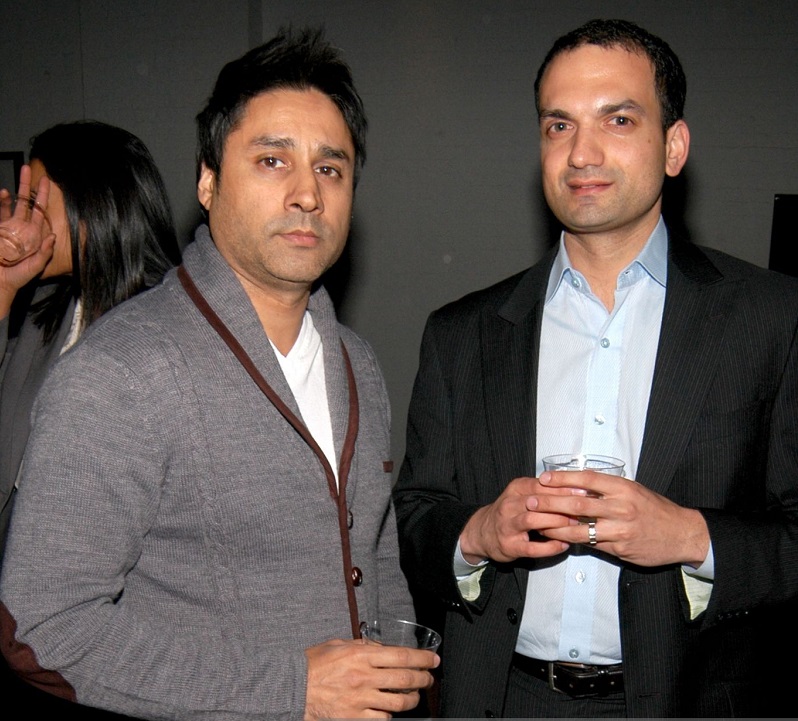
It’s available in the Apple store and in the Android store as well and Google Play store. True to what I said earlier, the app is always going to be free. There’s no paywall. We have so much premium content that’s coming in there. One thing that’s validating for me, like I said I’ve been in marketing for many, many years, the engagement that we have on social media around the content that we’re pushing because it’s educational, I’ve never seen it before. This is incredible. So we’re bringing that content in long form formats inside the app to really educate as well. That premium content is always going to be available for free.
What we’re building, what we’re testing… And this is what I was saying earlier about testing earlier about different lanes of where do we take this. For me, the app is always free, but we’re going to be testing software as a service type models that can be taken into corporate wellness type programs where people need to see more holistic views of the people. We’re already working on pilots with youth academies where coaches need to see all the people together, put them through different kinds of drills that might require different kinds of training.
We’re looking at elite sports as well. There’s all sorts of applications where we take that. Like I said, there’s revenue around the IP, revenue on supplements. There is going to be revenue on the software as service based kind of models as well.
Wow.



